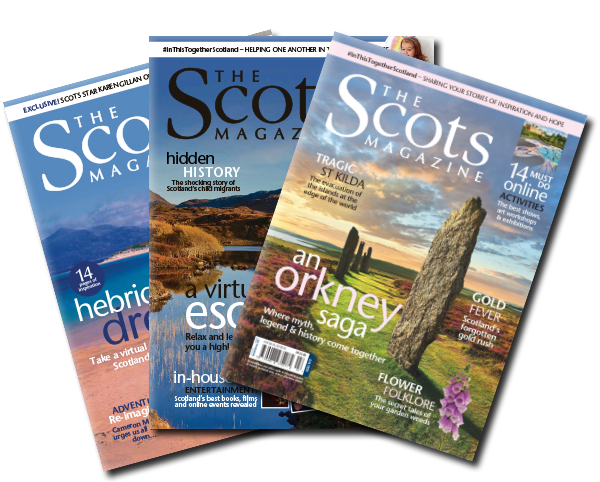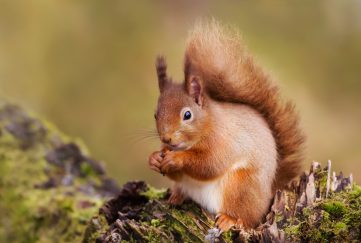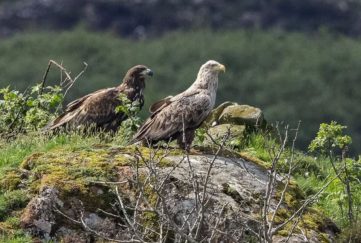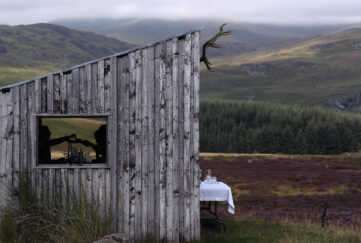By A Cat’s Whisker – Jim Crumley
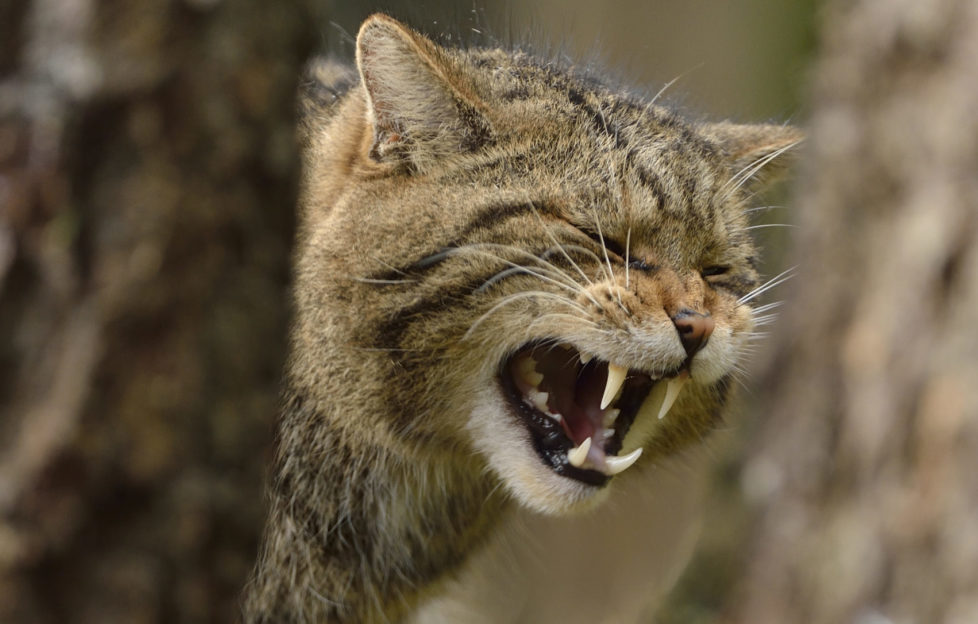
Unless something radical is done to save them, Scottish wildcats will soon come to the end of their nine lives…
Conservation’s vocabulary, as often as not, is laced with phrases like “finding a balance” and “reconciling the competing interests”. Instead, it should be going out on a limb for nature, and acknowledging that in so doing. Achieving a balance and reconciling competing interests are simply not a part of the equation, because they are incompatible with good nature conservation.
Take a look at the list of problems confronting the wildcat in Scotland and spot the common link. They are identified by the IUCN (International Union for Conservation of Nature) report published in 2019 as hybridisation with feral domestic cats, prey fluctuation, predator control, accidental killing by dogs, snares and poisoned bait, road accidents and habitat loss. The common link is that every problem it faces is directly attributable to human activity. If we lose the wildcat, we killed it.
The wildcat action plan identifies five priority areas – the Angus Glens, Strathbogie in Aberdeenshire, North Strathspey, Strathpeffer and Morvern. If you carry a map of Scotland in your head, you will know that these are small and widely scattered, and “small and widely scattered” is not an ideal basis on which to form a strategy for saving a species.
A study of these areas between 2015 and 2018 revealed that the cat population was 20% wildcats and 80% hybrids or domestic cats. The IUCN used the chilling phrase “a hybrid swarm”. The high incidence of breeding with domestic cats is something of an anomaly. It doesn’t happen on mainland Europe, even in areas where there are many domestic cats.
It is at this point in the argument that the IUCN report stopped talking about “the Scottish wildcat” and started talking about “the wildcat in Scotland”. The Scottish wildcat as a distinct sub-species is gone, if it ever existed which is questionable at the very least. And the sooner we stop using unhelpful tourist board nonsense like “the Caledonian tiger” as if our wildcat was a distinctive brand, the better.
An adult male tiger will be somewhere between eight and 12 feet long and weigh several hundred pounds. The only things tigers and wildcats have in common are stripes and a marked tendency towards extinction. Yet there it is on the Scottish Wildcat Action website. Click on “About Us” and an image of a wildcat comes up with the words “Saving the Highland Tiger”. The text below begins with these words, “Often referred to as the Tiger of the Highlands…” No-one who knows anything at all about Scottish wildcats calls them the Tiger of the Highlands.
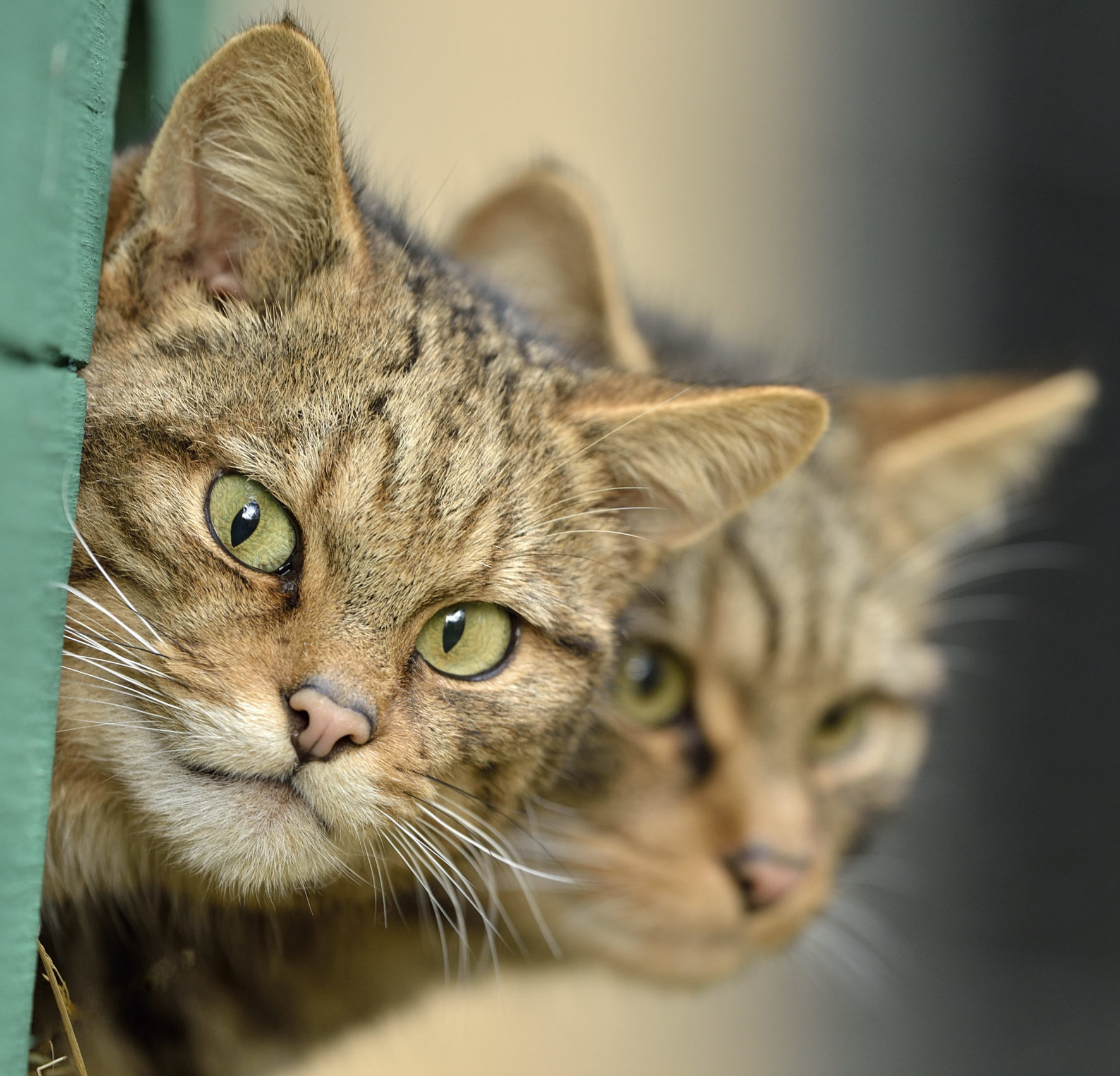
A pair of Scottish wildcats. Pic credit: L.Campbell.
It is symptomatic of a conservation project that was on a shaky footing from the outset when the then environment minister Paul Wheelhouse announced in 2013 that “we have given ourselves six years to halt the decline.” The six years have ended and the decline only steepens.
The IUCN’s advice was unambiguous. “The recovery of the wildcat in Scotland will only be possible with the support of reintroduction and reinforcement projects, and that ‘pure Scottish wildcats’ should be combined with wildcats from continental Europe…”
We lose nothing at all by bringing in wildcats from mainland Europe. They are genetically the same. We don’t dilute the strain of anything distinctive, and if it serves to banish the Highland Tiger nonsense from the lexicon of the endeavour, then that is a welcome bonus.
Besides, the alternative is one not to contemplate. As the IUCN report put it, “We consider the free-living population of Felis silvestris in Scotland to be no longer viable…the continuous threats to be too strong to allow recovery under the present conservation paradigm.”
All of which brings us back to the example of the Iberian lynx and how Spain dealt with it. And I am wondering if that might present the whole wildcat project with cause for thought.
As things stand, the five priority areas identified by Scottish Wildcat Action constitute the basis of what the IUCN called “the present conservation paradigm”. Also, as things stand, they are failing or rather the wildcat is failing within those priority areas, and management of the threats is dependent to a large extent on the goodwill of local people. So I am wondering if the solution to the fate of the wildcat in Scotland might not lie elsewhere.
I have argued in this magazine and in several books over the last decade, since the publication in 2010 of The Last Wolf, for a dedicated wilderness national park centred on Rannoch – the Moor and the Black Wood – and extending west across the Black Mount Hills, Glen Orchy and Inishail and as far as the north shore of Loch Awe and the east shore of Loch Etive.
It is there, I have argued, that we should reintroduce wolves on the basis that wolf reintroduction is the single most life-enhancing thing that we can do for the wellbeing of nature.
Might that same wilderness national park be the place to reintroduce wildcats, too? Look at what Spain has achieved with the Iberian lynx.
Scotland has never dared to think this big and this bold throughout the history of its nature conservation initiatives. According to the United Nations report released last May, the world is in the midst of a new mass extinction that threatens a million species. Alas for the million species, they were obliterated from the news cycle within 24 hours by the birth of a royal baby called Archie. No more has been heard of the one million species in national media outlets from that day.
What should be done going forward?
Perhaps it is time we tried to make a few headlines for nature of our own. As with climate change, with our zero carbon emissions plan, there is huge merit in small countries setting an example to the rest the world. Here is a project that would address a number of fundamentals:
– A re-evaluation of how we treat, manage and own land in Scotland.
– An acknowledgment that our existing national parks are hopelessly skewed towards some of the most destructive traits of tourism instead of nature conservation.
– A determination to tackle the most difficult and potentially divisive aspects of nature conservation by showing a willingness to take a decisive stand on nature’s behalf, whenever and wherever it is deemed essential.
– It gives the project to save the wildcat in Scotland a much greater chance of success.
– The wolf should be back in Scotland. There is no real argument against it, and it is at home now in every mainland European country. There are benefits for nature and for biodiversity recovery on a scale we can only imagine if we study the effects of the last 25 years since the wolf’s return to Yellowstone National Park.
Scotland has huge potential to be a showcase for thoughtful nature conservation in a 21st-century nation. How fitting if the nadir in the fortunes of the wildcat proved to be the moment that caused us to re-examine everything, and beyond which we embarked on a series of grand gestures that rebuilt our relationship with nature.
Robert Burns apologised to nature on behalf of humankind for screwing up the planet in a single remarkable verse:
I’m truly sorry man’s dominion
Has broken nature’s social union
And justifies that ill opinion
Which makes thee startle
At me, thy poor earth-born companion
And fellow mortal!
But that was 215 years ago. It is time we stopped apologising and begin to repair nature’s social union.
You can read more of Jim Crumley’s Scottish wildlife columns online here, and each month in The Scots Magazine.
Subscribe to The Scots Magazine today for more from Jim Crumley >>
